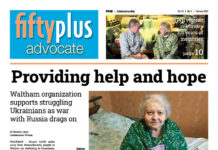Fewer Medicare prescription drug plan enrollees are falling into a coverage gap known as the doughnut hole in which they bear the full cost of their prescriptions, according to a study from the nonpartisan Kaiser Family Foundation.
A total of 19 percent of Medicare Part D beneficiaries who did not receive low-income subsidies hit that gap in 2009, the latest year for which figures are available. That compares to 26 percent in 2007. People who receive low-income subsidies do not have to make payments in the doughnut hole.
Kaiser said the increased availability of cheaper generic drugs for some chronic conditions may be behind the drop in people hitting that coverage gap.
About 29 million people are enrolled in Medicare prescription drug plans. Enrollees and their drug plans share costs up to a certain amount each year. Then enrollees pay the full cost for prescriptions before becoming eligible for catastrophic coverage, where the plan resumes paying and covers 95 percent of the bill.
This year, for example, customers and their drug plans must spend $2,840 before they reach the coverage gap. Then beneficiaries pick up the next $3,608 before they become eligible for catastrophic coverage.
Congress created this gap essentially to keep prescription drug spending within a budget and offer both upfront coverage and protection against big expenses.
The health care overhaul aims to gradually fill the gap. This year, those who reach it will receive 50 percent discounts on brand-name drugs. Plans that offer Part D coverage also will pick up 7 percent of the cost for generics.
Beneficiaries who hit the doughnut hole usually take medication for chronic conditions like cancer, diabetes or Alzheimer’s disease, and they frequently cut back on their prescriptions due to the financial crunch the gap causes, according to Kaiser. — AP












